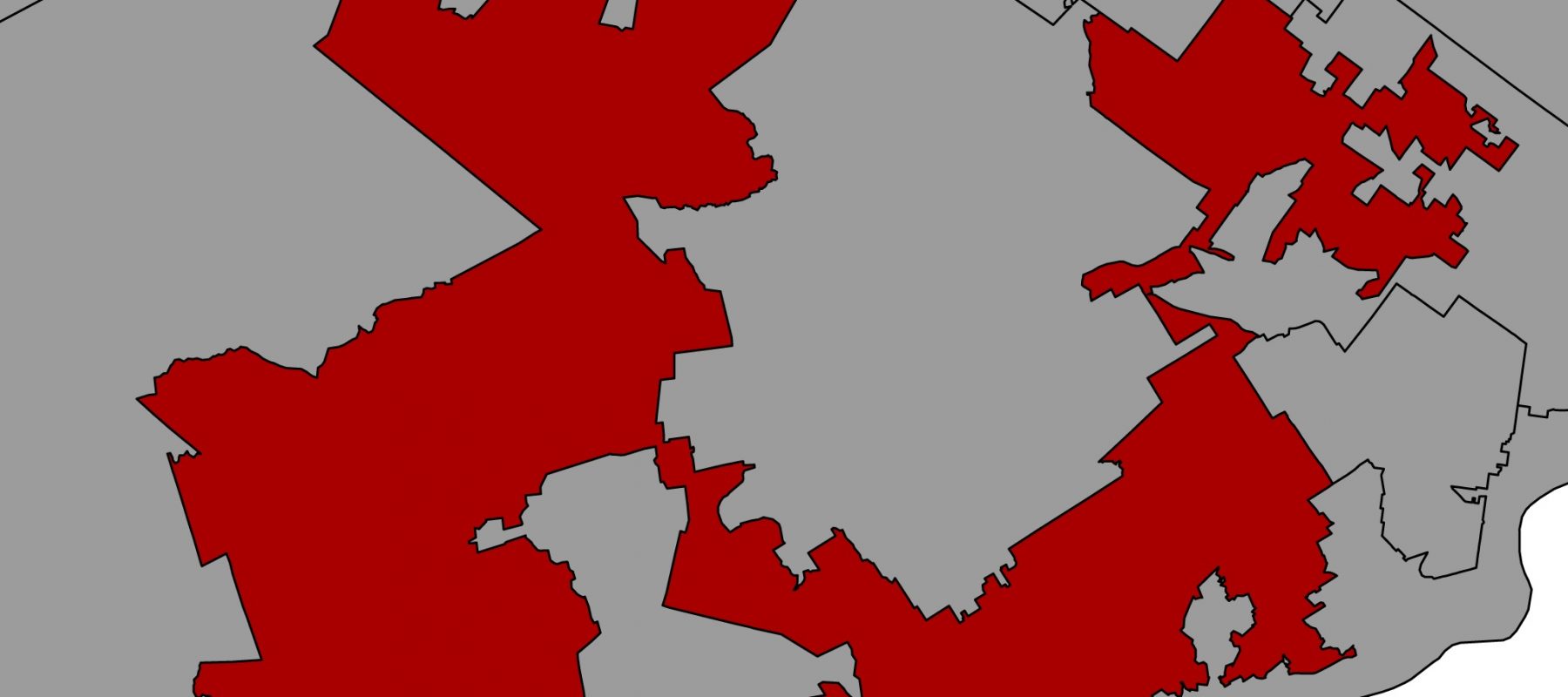Installation shot of Solving for X=Representation: Slaying the Gerrymander, Ulrich Museum of Art, Spring, 2020.


Solving for X is a series of exhibitions organized by the Ulrich Museum of Art in collaboration with university scholars across campus. The intent of the Museum is to work with WSU scholars in all disciplines to create visualizations of their research. The objective is to explore the potential for the Museum to make accessible to the public the fascinating and important research taking place on campus. We are thrilled by the opportunity to work with researchers across campus and excited about the challenges we will face together in discovering how to create visual pathways to understanding.
Every ten years, the U.S. Consitution requires the federal government to conduct a census to count where people live. Separately, the U.S. Supreme Court requires that the electoral districts across a legislature have roughly the same population, be it for the U.S. House of Representatives, the Kansas State Senate, the Sedgwick County Commission, or the Wichita City Council. The combination of these requirements means that after everyone is counted by the Census Bureau in 2020, most levels of government will need to redraw their district boundaries to balance out population counts.
The United States is rare among countries in that it places this redrawing responsibility in the hands of elected officials—quite often the same ones who will be running for office in the districts they drew. “Gerrymandering” is the term given to district drawing done for the benefit of the people drawing the maps, either for the political party in charge, or for the individual incumbent politicians. In some cases, gerrymandering can be immediately obvious in odd district shapes, as shown in “Goofy Kicking Donald Duck,” but it can also be done more subtly.
One approach to help stop gerrymandering is in the use of computers to automate the drawing of districts. Dr. Brian Amos is an Assistant Professor in Political Science whose work has been dedicated to improving the algorithms available to researchers and activists on this front. He does this by identifying bias in existing approaches that may skew measurements in how gerrymandered a map is, and by incorporating Voting Rights Act protections for racial and ethnic minority groups into algorithms created for other countries without those protections.